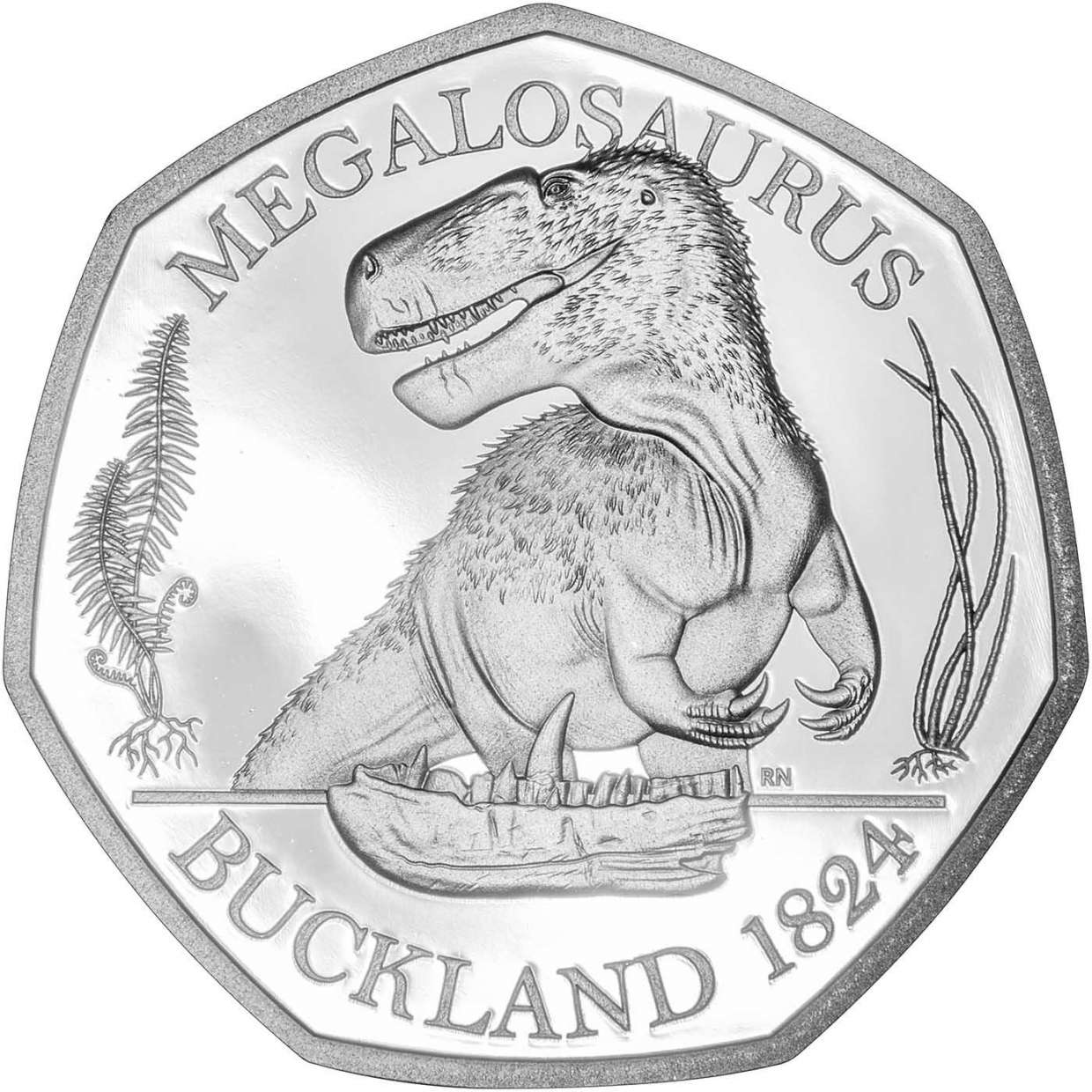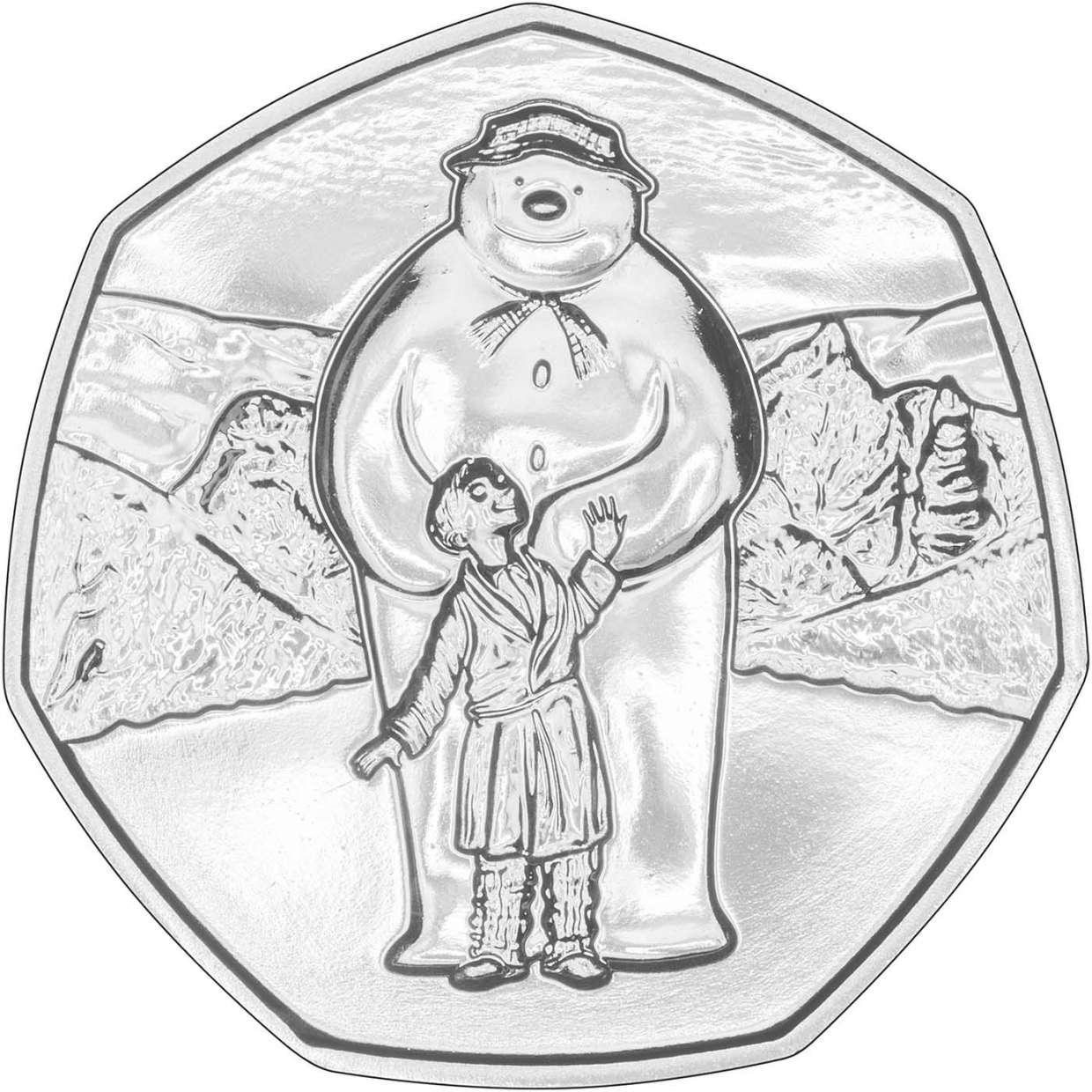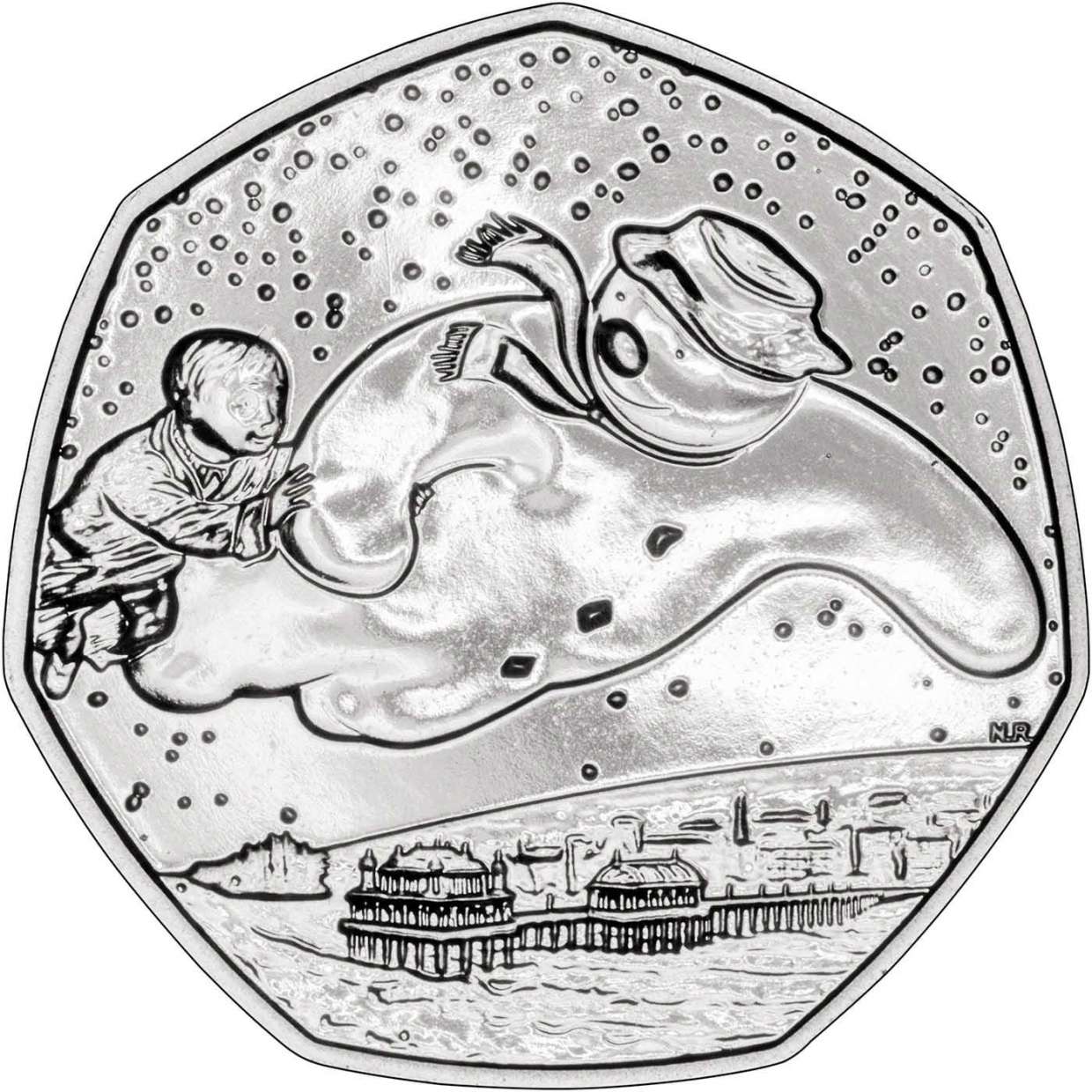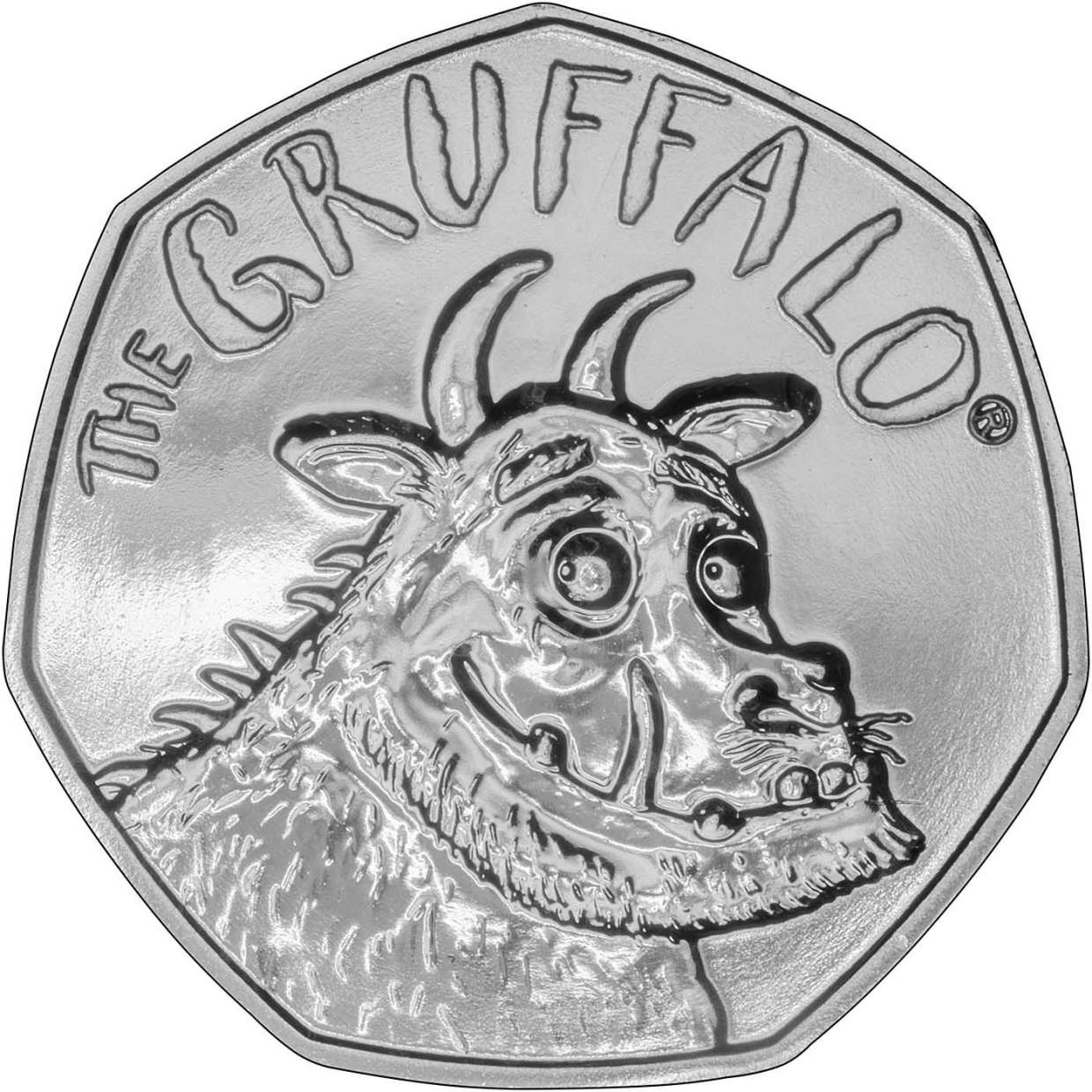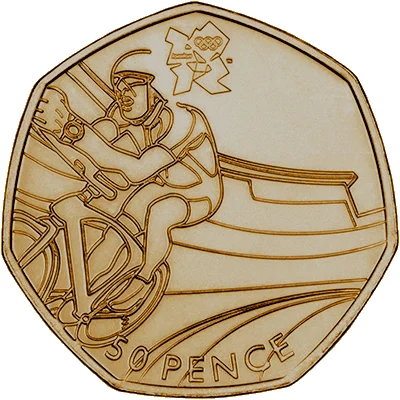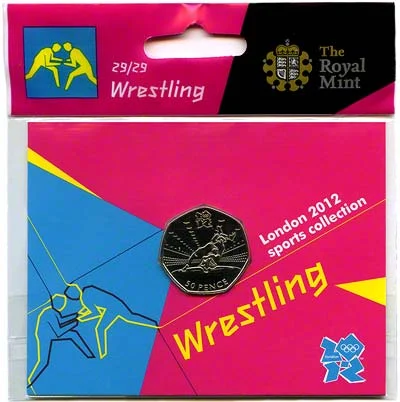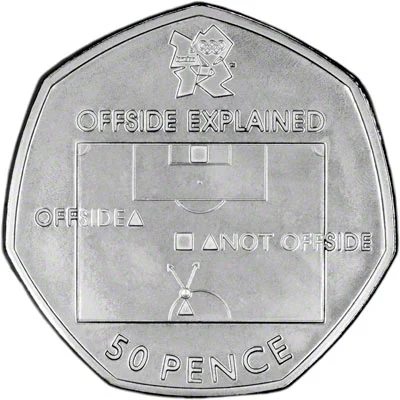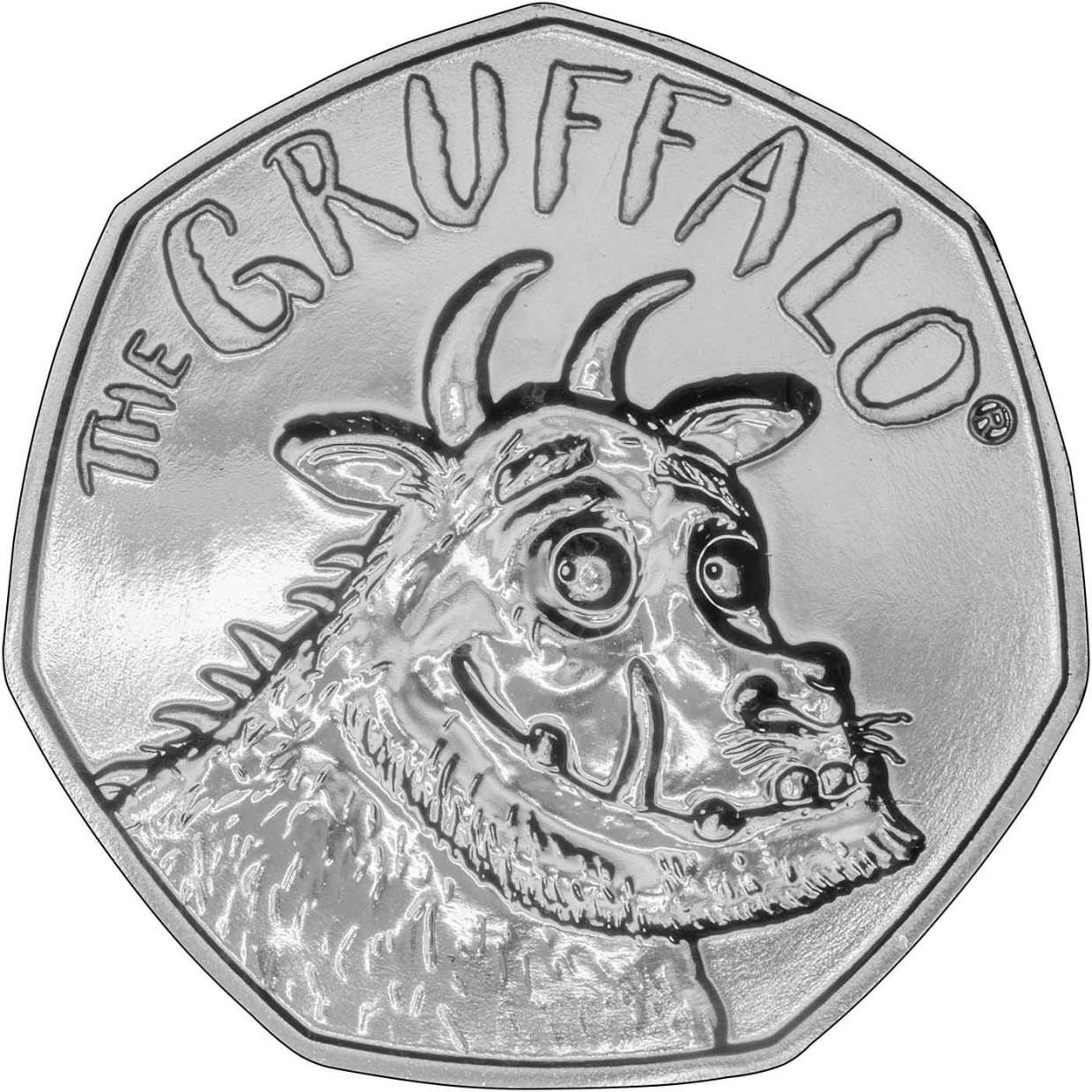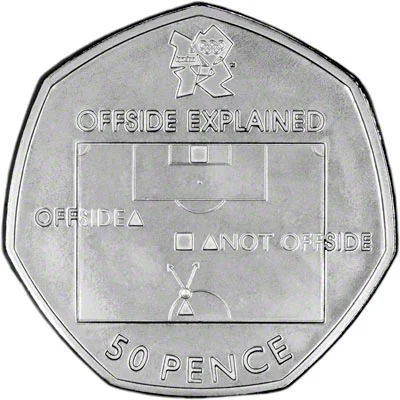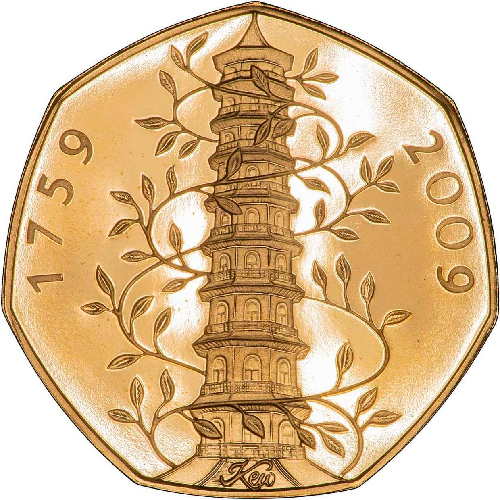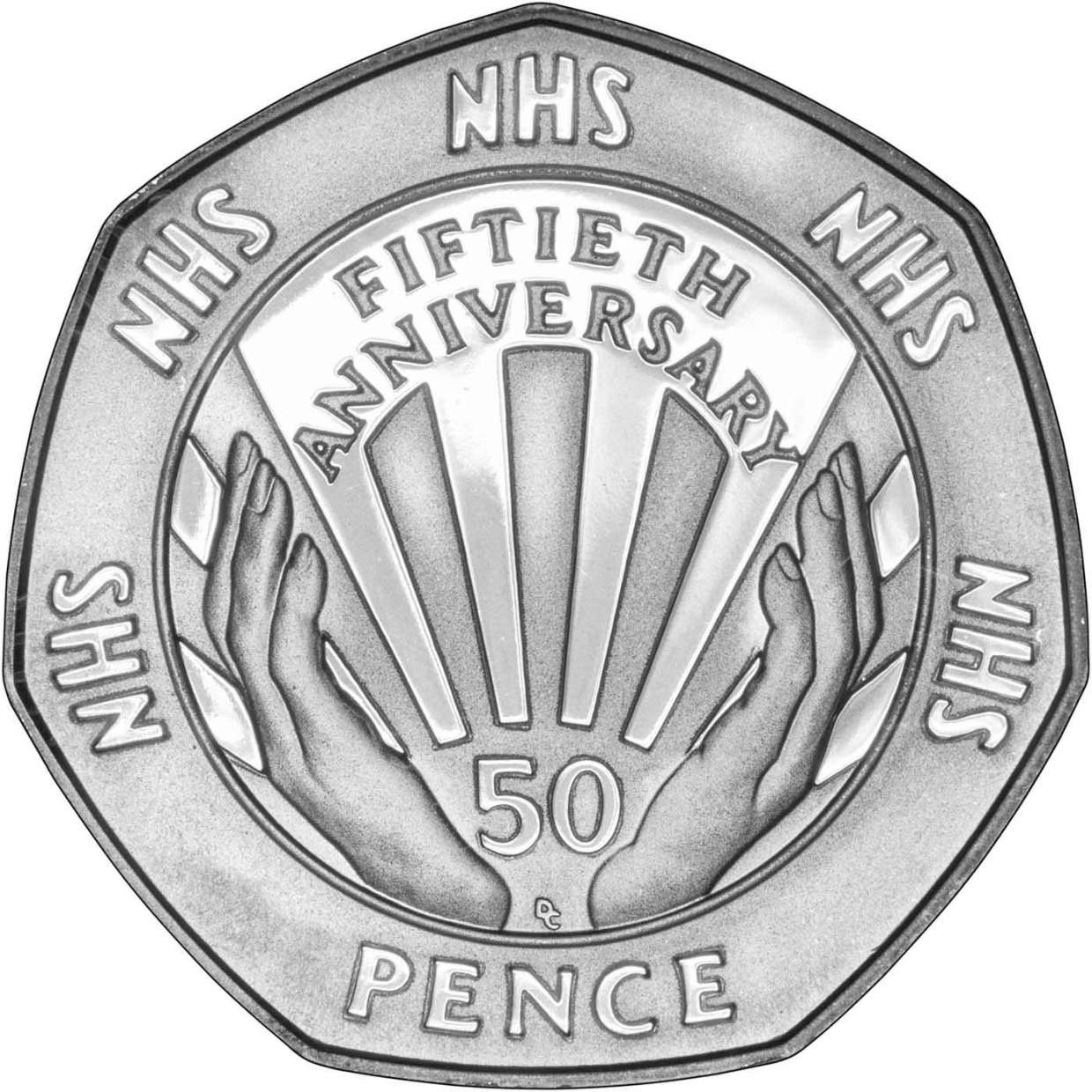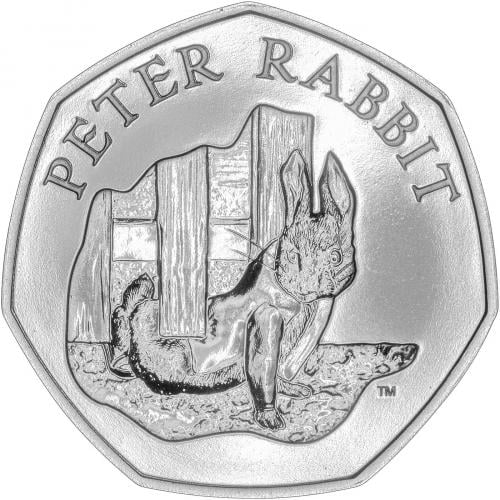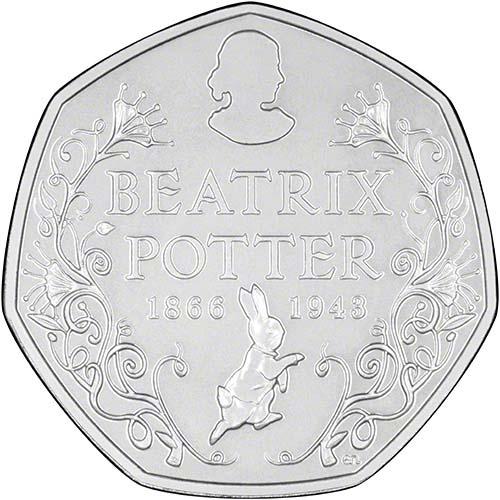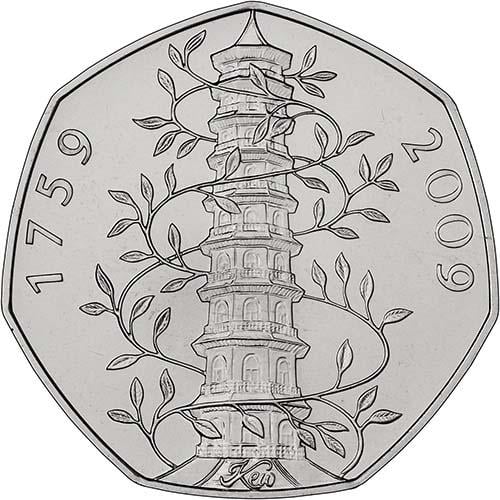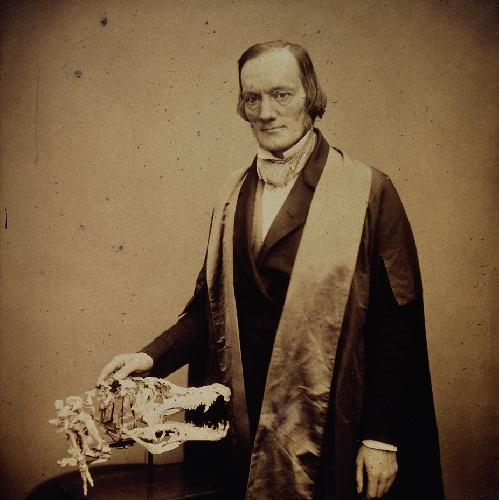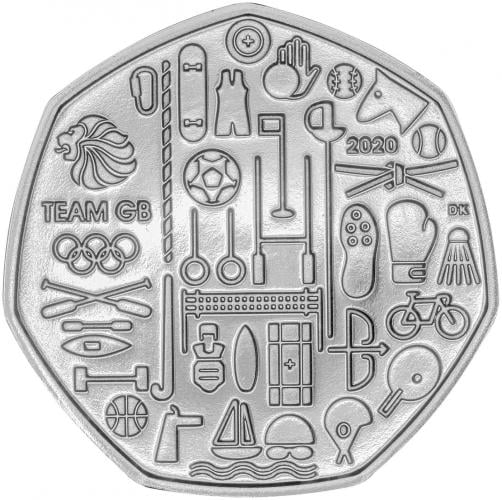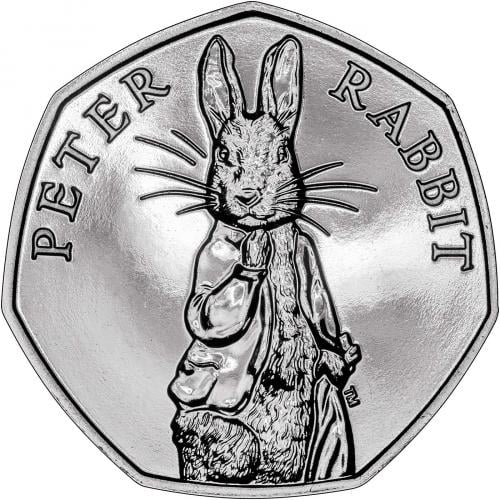Forgotten Dinosaur - the Iguanodon 50p
Synopsis
Interestingly, despite being voted the most popular British dinosaur in a recent twitter poll, it seems that Iguanodon 50p has flown below the radar of collectors. None of its varieties are sold out at time of writing even though it has been available to order since 13th February 2020. The Megalosaurus 50p released on the same day has sold out of the gold proof version and both the coloured and plain silver proof varieties. Making matters even worse, the Hylaeosaurus 50p has already sold out of coloured silver proofs even though it was only released three days ago! So, why is the Iguanodon performing so badly? Although it was possible to order the Iguanodon coin from February, the coin wouldn’t be dispatched until March as the Megalosaurus coin was sent out first. Presumably, some collectors decided to put off their purchase of the coin until they would receive it immediately after their order. Contenting themselves with buying just the Megalosaurus to begin with. Of course, we know what happened then. With the escalation of the coronavirus crisis it is likely that the poor Iguanodon 50p got a little lost in the mayhem of the lockdown that was to follow.
A Dino Winner
Despite its disappointing coin sales, Iguanodon was one of the most successful dinosaur species. They populated every continent and thrived on a large array of vegetation. One reason for this is that they evolved a different way of eating. Most dinosaurs could only crudely slice food with their teeth. Iguanodon were the first herbivores that had back teeth that could grind up plants before swallowing them. This ability to chew sped up the digestion of even the toughest plant material. Iguanodon were also very nimble giving them an advantage over many of their peers. Although they walked on all fours, they were able to run on two legs making them much quicker than most other herbivores. This was key to their success as the raptors that often stalked them were fast and agile killers.
The Iguanodon 50p is the second of the Dinosauria Collection, which in turn is part of the Tales of the Earth Series. Along with the other dinosaurs featured in this collection (the Megalosaurus and Hylaeosaurus) the Iguanodon was a British discovery. This collection celebrates these dinosaurs in particular as they were the first to be unearthed and named. The wealth of fossils on the British Isles was studied closely by Sir Richard Owen. Owen was a renowned biologist and, after his study of the three newly discovered creatures, he coined the word ‘Dinosauria’ to describe the clade. He borrowed from ancient Greek the terms deinos (meaning 'terrible, potent or fearfully great') and sauros (meaning 'lizard or reptile') to create this new name.
Reverse Design
The reverse (pictured above) was designed by palaeo-artist Robert Nicholls with guidance from the Earth Sciences Department of the Natural History Museum. The dinosaur dominates the centre of the coin. According to most recent estimates the Iguanodon would have been around three meters tall and ten metres in length, weighing in at five tonnes. This makes it by far the biggest of the three dinosaurs in the collection. Similar to the Megalosaurus coin, the long thick tail that would have balanced out the body of the creature, disappears into the distance and the legs vanish under the separating line. So, these features are not fully displayed on the coin.
Again, the designer chooses to focus attention on the most unusual features of the Iguanodon, the specifically evolved parts that help identify what makes an Iguanodon an Iguanodon. In this case, Nicholls concentrates on the head and ‘hands’ of the creature. An Iguanodon’s head is easily recognisable because of its mouth. The front ends of their jaws were toothless and tipped with bony nodes, both upper and lower. Between these was a gap covered and lengthened by a keratinous material, which formed a beak for biting off stems and leaves. This beak is easily visible on the coin as Nicholls has illustrated the head of the dinosaur in profile to show off its unusual shape.
However, this beak is not the best-know Iguanodon feature. That honour goes to the animal’s thumbs. This may sound odd (it certainly looks it) but the Iguanodon had conical spikes for thumbs. These spikes could be up to six inches long and were made of bone covered by more of the hardened keratinous material that made up its beak. A nasty piece of weaponry you might think. Well, yes and no. The likelihood of Iguanodon using its thumbs to defend against a predator is slim. In order for the Iguanodon to use its spikes against an attacker, the carnivore would have to already be well within biting range. No thanks! So, other theories have developed over the years. They could conceivably have been used against other Iguanodons in tussles over mating or food. Or perhaps they were tools for opening ancient fruit or nuts. Finally, an interesting but slightly painful sounding idea is that they were almost like a grappling hook for latching on to each other during mating. Who knows? No-one really. Palaeontologists are still debating these impressive appendages to this day. So, quite rightly, they appear in pride of place on the coin, positioned slightly away from the dinosaur’s body so they are clearly visible on the left-hand side of the coin.
It is a fossilised example of this thumb spike that sits below the separating line. The dinosaur itself and the fossilised thumb spike are the only parts of the coin that are coloured on the colour printed versions of the coin. Above the creature, the inscription ‘IGUANODON’ arches across the top of the coin. Mesozoic plants appear on either side of the dinosaur and finally, the inscription ‘MANTELL 1825’ curves around the bottom.

Obverse Design
The obverse of the coin bears the fifth portrait of The Queen. Designed by Royal Mint engraver, Jody Clark, the fifth definitive UK coin portrait features a bust of Queen Elizabeth II wearing the King George IV State Diadem. This portrait shows an 88-year-old Queen with deep wrinkles around the eye and mouth areas. The Queen wears Diamond Jubilee drop pearl earrings and her chin is lifted slightly, which has been said to indicate that she is looking positively towards the future. The truncation is shaped into a sweeping curve. This portrait was introduced in 2015 and continues to be used today.
The inscription reads: ELIZABETH · II · D · G REG · F · D · 50 PENCE · 2019.
Dinosaur Discovered
There is some debate about the discovery of the Iguanodon. Most sources now agree that Gideon Mantell's wife, Mary Ann, discovered the first teeth of an Iguanodon embedded in some rocks on a roadside in Tilgate Forest while her husband was there visiting a patient. Dr Gideon Mantell was an Obstetrician by trade and at one point was delivering anything up to 300 babies a year! Although some have pointed out that there is no evidence that Mary Ann made the find, it is certainly something she would have been capable of. It is well known that Mary Ann helped Mantell in recording and sketching his finds so she certainly would have had enough experience of fossils to be able to recognise one. In fact, Mary Ann helped Mantell illustrate his book on The Fossils of the South Downs, which was published in the same year (1822). She made over 364 fine lithographs from her husband’s drawings.
Following her find, Gideon Mantell sent the teeth to Georges Cuvier, who initially decided that the teeth belonged to a rhinoceros, but in 1824 he wrote a letter admitting his mistake and agreeing that the remains were reptilian and quite possibly belonged to a giant herbivore. A year later, on 10 February 1825, Mantell formally published his findings presenting a paper on the remains to the Royal Society of London. He named the creature Iguanodon “iguana tooth” because the teeth Mary Ann had found looked like an extremely large version of the teeth of living iguanas. Mary Ann Mantell also illustrated many of the fossils, that were then used in her husband's scientific publication called Illustrations of the Geology of Sussex published in 1827, which again included discussion of the Iguanodon. Not only did the teeth turn out to be around 130 million years old and an astonishing palaeontological find, as an essential element in the naming of the second dinosaur, they were also instrumental in the discovery of the dinosaur clade.
Coin Varieties
| Date | Variety | Mintage |
|---|---|---|
| 2020 | Iguanodon 50p Gold | 350 |
| 2020 | Iguanodon 50p Silver | 3,000 |
| 2020 | Iguanodon 50p Silver with Colour | 7,000 |
| 2020 | Iguanodon BU with Colour 50p | 50,000 |
| 2020 | Iguanodon BU 50p | UNLIMITED |
This range introduces an entirely new type of coin. The Dinosauria collection is the first to have a brilliant uncirculated (BU) coin with colour. The colouring process is usually reserved for the higher value silver proof versions of coins. In addition to this, the coloured BU coin is equipped with augmented reality technology. Another first for the Royal Mint.
The Iguanodon 50p Gold Proof
Astonishingly, there are still gold proof coins available to buy from the Royal Mint website(at time of publication). As I have said this is probably due to the timing of the coins release. You might be forgiven for thinking that it was because the coin is pretty expensive at £1,020 a pop but with a mintage of only 350 pieces the Iguanodon 50p is rare even for a gold proof coin. Some gold proof varieties, like the 1994 D-Day Gold Proof 50p, have mintages of over 1,800. As always, the gold coin is finished to proof standard and should be absolutely perfect. It comes in a polished wood presentation box and is accompanied by an authentication certificate and information leaflet. All of this is packed together in a box bearing illustrations based on scientifically accurate reconstructions.
The Iguanodon Silver Proof
Another shock is that there are still silver proof coins available on the Royal Mint website. With a mintage of only 3,000, we certainly would have expected to see these sell out by now under normal circumstances. Particularly as the Royal Mint have brought back the classic plain silver proof especially for the Dinosauria Collection. Also, it is a shade cheaper than the coloured coin at £60. Buying one from Chards will save an extra fiver too, as we are selling the coin at just £55. It is presented in a black case and comes with both information leaflet and authentication certificate, in the illustrated box.
The Iguanodon 50p Silver Proof with Colour
Always popular with collectors, colour printed silver proof versions of coins always sell out quickly. However, in probably the biggest blow of all, the coloured silver proof Iguanodon 50p has proved to be the exception to the rule. At the time of publication, there are still coins left in the 7,000 coin run. The coin comes in an acrylic display case that shows enlarged illustrations of the plants that appear on either side of the Iguanodon on the coin. A handwritten label of the name of the dinosaur runs across the top of the block. This seems to be the handwriting of the coin’s designer Robert Nicholls, which also appears in the information leaflet that supplements the coin. As always, the coin should have an authentication certificate.

The Iguanodon 50p BU With Colour
As promised, the brand-new coloured BU coin comes with augmented reality technology. Once collectors have their coin, they can scan the packaging into the Royal Mint's Activate app and find out many additional facts, clips and images. This a new technology for the Royal Mint and has been used for the very first time across the Dinosauria range. Like the plain BU version, this coin comes embedded into the illustrated information leaflet. The 50,000 coloured BU coins are exclusive to the Royal Mint, so, you won’t be able to find one anywhere else until they start showing up on online auction sites. With such a large mintage, it isn’t a surprise that this version is still available to buy through the Royal Mint. However, at £20 a coin, some cynics may think it a little gimmicky and stick with the traditional BU for half the price. Whichever way you look at it, it’s an interesting addition to the collection.
The Iguanodon 50p BU
Embedded into its enlightening information leaflet complete with illustrations from designer Robert Nicholls, the brilliant uncirculated version of the Iguanodon coin is a great addition to any collection. However, you do have to remember to check whether or not the coin you are ordering will come in this presentation leaflet. Unlike the coloured version, the plain BU coin is not exclusive to The Royal Mint and if ordered from other coin dealers may arrive in their packaging, which is often a disappointment in comparison to The Royal Mint official presentation. If you buy from Chards, it will definitely come in the official Royal Mint packaging and it will also cost you a little less. We are selling the Iguanodon 50p BU for just £9, saving you a pound on The Royal Mint price!
Related Blog Articles
This guide and its content is copyright of Chard (1964) Ltd - © Chard (1964) Ltd 2025. All rights reserved. Any redistribution or reproduction of part or all of the contents in any form is prohibited.
We are not financial advisers and we would always recommend that you consult with one prior to making any investment decision.
You can read more about copyright or our advice disclaimer on these links.






